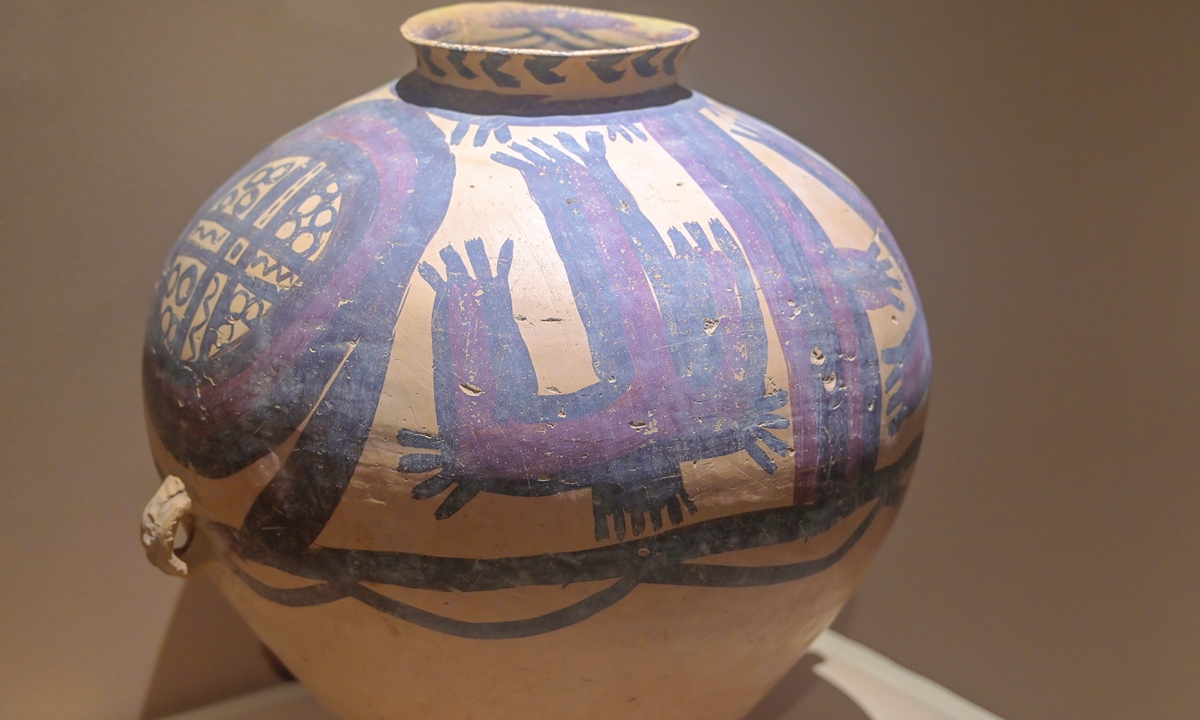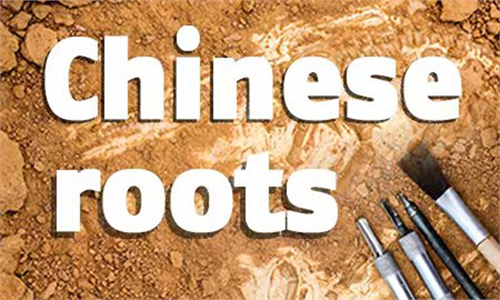ARTS / CULTURE & LEISURE
Chinese roots

Majiayao Culture pottery Photo: IC
Majiayao Culture: Connecting Central Asia before the Silk RoadThe Majiayao Culture, a prehistorical culture that dates back to between 5,000 and 4,650 years ago, was scattered in the western regions of Northwest China's Gansu Province as well as the eastern part of Qinghai Province.
The culture gained its name from the riverside village in Gansu where it was discovered in 1924, when Swedish archaeologist Johan Gunnar Andersson found gorgeous painted pottery fragments there.
The Majiayao people painted their pottery wares mostly orange and yellow with a small amount of white. Archaeologists noticed that besides water ripple and swirl patterns being common on the pottery, lively frog and tadpole drawings were also quite popular at the time.
Many pottery wares were decorated with river-themed drawings of aquatic animals or rolling waves. Experts theorize that they suggest a deep connection and affection among the Majiayao people for rivers.
After comparing the painted pottery from Majiayao with ones discovered in Central Asia, some scholars found that the two decorative patterns are very similar. Given that Majiayao's location is perfect for connecting China and Central Asia, experts believe that a massive amount of cultural exchanges took place between the two locations long before the Silk Road.
"More archaeological evidences show that around 5,000 years ago, the Chinese prehistoric culture represented by the Majiayao had exchanges with the Harappa Culture in Pakistan," Tang Huisheng, a professor at the History and Culture School, Hebei Normal University, who has been studying both the Majiayao and Harappa cultures for 20 years, told the China News on October 3, 2022.
The idea of possible exchanges between China and Pakistan 5,000 years ago came from a decades-long observation by Tang and his team: Considering the fact that the Majiayao Culture gained most of its characteristics from the Yangshao culture in the Central Plains, its other artistic identifiers such as depictions of the human body and sea shell decorations could have come from another culture - the Harappa Ruins. In 2019, Tang and his team carried out an excavation at the Harappa Ruins with the aim of finding more correlations between the two cultures.
The team not only discovered many relics related to the Majiayao Culture, but also noticed that the Majiayao people introduced copper smelting from Central Asia, thus making great contributions to the arrival of the Bronze Age in China.
Global Times

